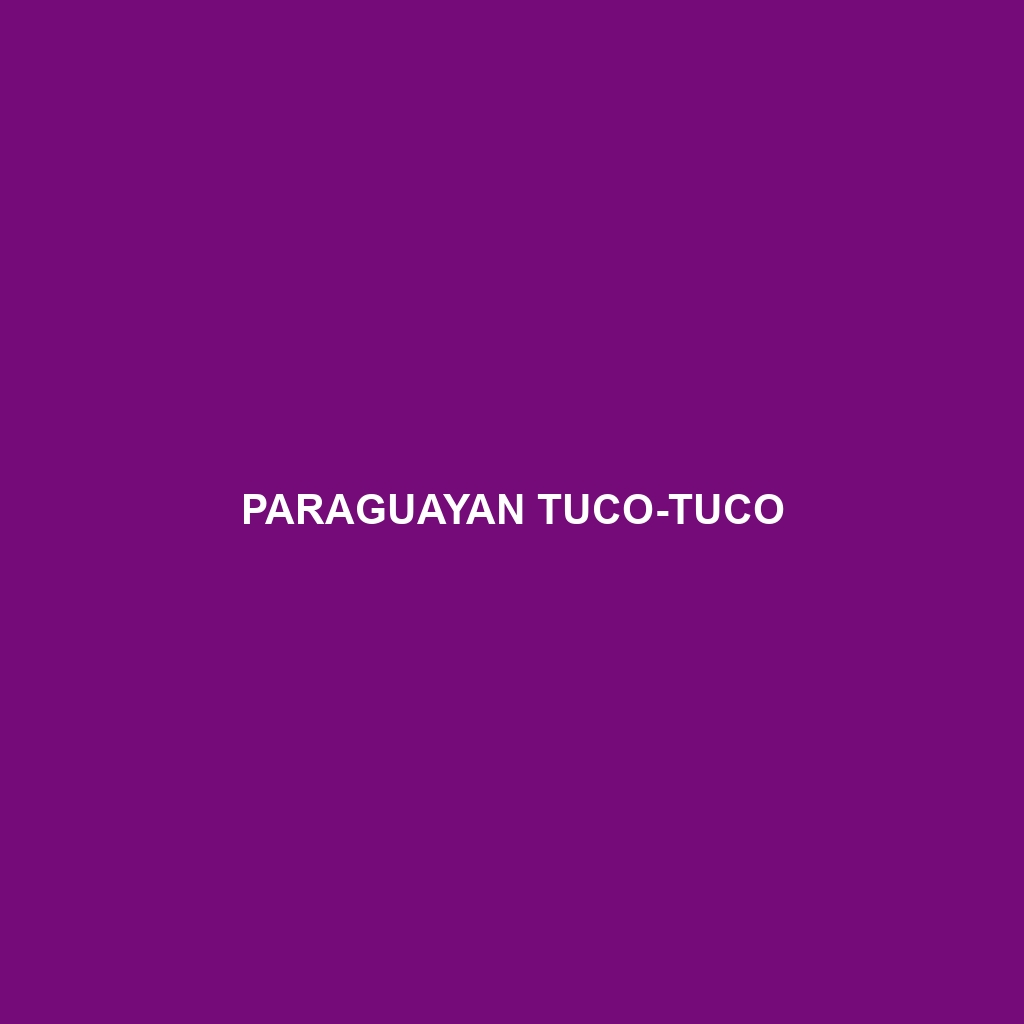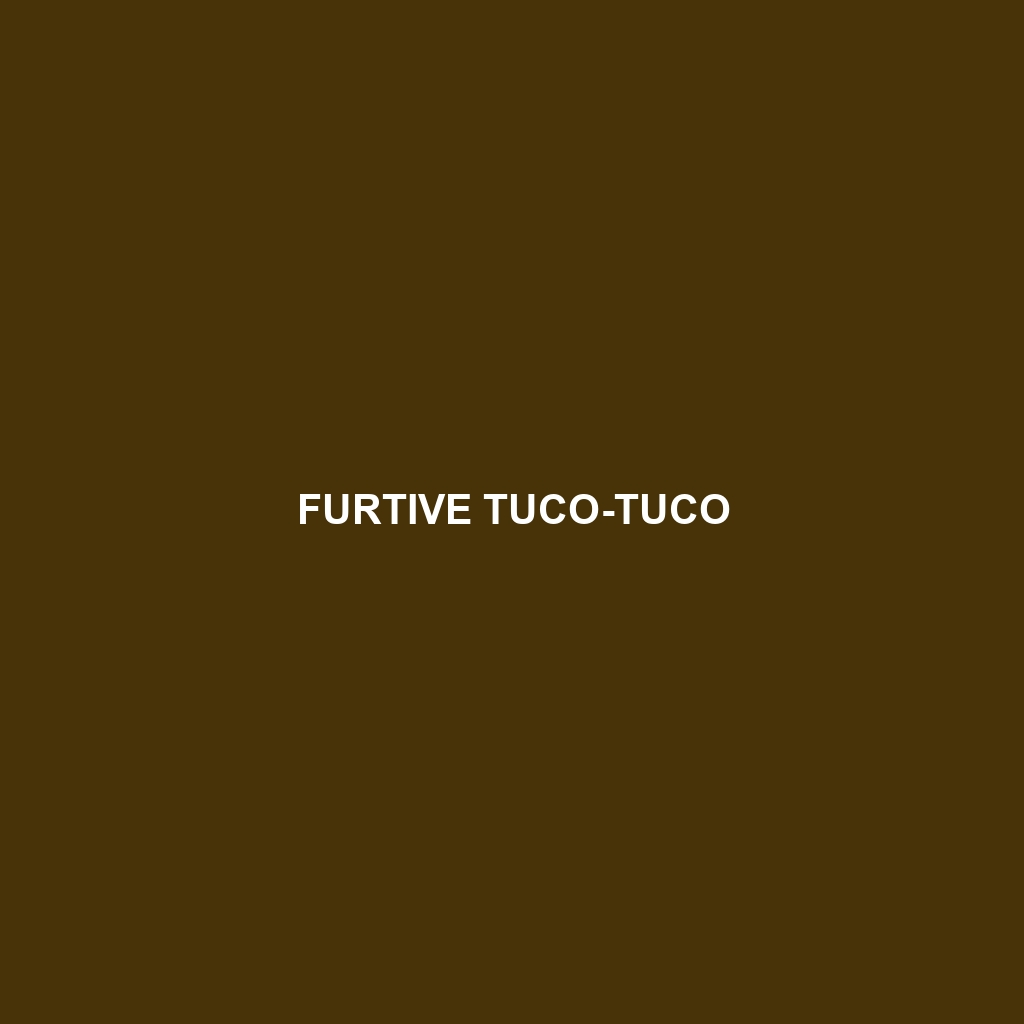Discover the fascinating world of the Brown Tuco-tuco (<i>Ctenomys adecli</i>), a unique rodent native to the grasslands of Argentina. This robust herbivore is a master burrower, playing a vital role in its ecosystem while adapting to challenges like habitat loss and drought. Explore its behaviors, diet, reproduction, and conservation status in this comprehensive overview.
Tag: Vulnerable Species
Perrens’s Tuco-tuco
Discover the fascinating world of Perrens's Tuco-tuco, a unique rodent native to central Argentina's grasslands. Learn about its intriguing burrowing behaviors, dietary habits, and critical role in maintaining ecosystem balance, as well as the conservation challenges it faces due to habitat loss. This blog post delves into the life and importance of this vulnerable species, highlighting why it deserves our attention.
Andean Tuco-tuco
Discover the fascinating life of the Andean Tuco-tuco (<i>Ctenomys andinus</i>), a unique rodent thriving in the lofty Andes Mountains of South America. This nocturnal digger, known for its intricate burrow systems and herbivorous diet, plays a crucial role in its ecosystem by aerating soil and promoting biodiversity. Despite its adaptability to high altitudes, the species faces threats from habitat loss, making conservation efforts vital for its survival.
Paraguayan Tuco-tuco
Discover the fascinating world of the Paraguayan Tuco-tuco, a medium-sized rodent native to the grassy plains of Paraguay. Learn about its unique habitat, nocturnal behavior, and vital role in ecosystem health, as well as the conservation challenges it faces due to habitat loss. This blog post highlights the intriguing adaptations and social structures of this vulnerable species.
Pearson’s Tuco-tuco
Discover Pearson's Tuco-tuco, a unique rodent species native to the grasslands of Argentina. With its distinctive burrowing habits and vital role in soil aeration, this nocturnal creature faces increasing threats from habitat destruction. Learn about its fascinating behavior, diet, and conservation status in this insightful blog post.
Maule Tuco-tuco
Discover the fascinating Maule Tuco-tuco, a medium-sized rodent native to central Chile's diverse habitats. With its impressive burrowing skills and vital role in aerating soil, this vulnerable species faces threats from habitat loss. Learn more about its unique behaviors, diet, and conservation status in our latest blog post.
Mendoza Tuco-tuco
Discover the fascinating world of the Mendoza Tuco-tuco, a unique rodent native to the Andean foothills of Argentina. This nocturnal creature, known for its robust build and extensive burrowing habits, plays a vital role in its ecosystem as a seed disperser and soil aerator. Explore its habitat, diet, and conservation status to understand the challenges this vulnerable species faces amid habitat loss and environmental change.
Minute Tuco-tuco
Discover the fascinating world of the **Minute Tuco-tuco** (*Ctenomys minutus*), a small rodent native to the grasslands of Argentina. With its remarkable burrowing skills, social behavior, and vital role in soil aeration, this vulnerable species faces significant threats from habitat loss. Learn more about its intriguing physical traits, diet, and conservation efforts in our detailed species description.
Natterer’s Tuco-tuco
Discover the fascinating world of the Natterer's Tuco-tuco, a burrowing rodent native to the grasslands of South America. With unique adaptations for digging and a crucial role in their ecosystem, these nocturnal creatures face challenges from habitat loss and require urgent conservation efforts. Learn about their physical characteristics, diet, and behaviors that make them vital to maintaining ecological balance.
Furtive Tuco-tuco
Discover the elusive Furtive Tuco-tuco (*Ctenomys furtivus*), a nocturnal burrowing rodent native to the grasslands of Argentina. With its distinctive sandy brown fur and exceptional digging abilities, this medium-sized species plays a crucial role in its ecosystem by aerating soil and supporting plant growth. Unfortunately, habitat loss has made it vulnerable, underscoring the importance of conservation efforts to protect this unique creature and its environment.








